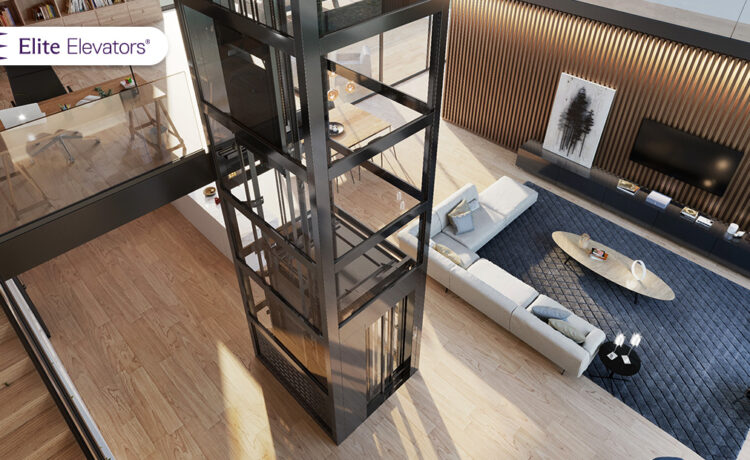As homeowners look to enhance convenience, accessibility, and home value, residential elevators are becoming increasingly popular. Whether you’re planning for aging in place, have mobility challenges, or simply want to add a touch of luxury, a home elevator can transform your living experience.
But choosing the right residential elevator isn’t always straightforward. There are several types available, each with its own benefits, limitations, and ideal use cases. This guide will walk you through the main residential elevator types in 2025, helping you make an informed choice that fits your home and lifestyle.
Why Consider a Residential Elevator?
Before diving into the types, it’s worth highlighting why homeowners invest in residential elevators:
- Accessibility: Easier movement for seniors, people with disabilities, or anyone with mobility issues.
- Convenience: Transport groceries, laundry, or heavy items between floors effortlessly.
- Future-proofing: Plan ahead for changing mobility needs as you age.
- Home value: Adds luxury appeal and can increase property resale value.
- Space efficiency: Modern elevators can fit into small spaces or retrofit existing homes.
Main Types of Residential Elevators
1. Hydraulic Elevators
How They Work:
Hydraulic lifts use a piston (or ram) driven by fluid pressure to lift the cab. The fluid is pumped into the cylinder, pushing the piston and moving the elevator upwards.
Pros:
- Smooth, quiet operation.
- Can carry heavier loads (up to 1,000 lbs or more).
- Suitable for multiple floors.
- Stable and reliable for frequent use.
Cons:
- Requires a machine room or space for the hydraulic pump.
- Installation can be more invasive and expensive.
- Potential risk of fluid leaks (though modern systems are well-sealed).
Ideal For:
Larger homes with space for the machinery, multi-story residences, and homeowners prioritizing comfort and heavy lifting capability.
2. Traction Elevators
How They Work:
Traction elevators use steel cables, counterweights, and an electric motor to move the elevator car up and down. These systems often do not require a separate machine room.
Pros:
- Energy-efficient, especially with regenerative drives.
- Typically faster than hydraulic elevators.
- Requires less space since no large hydraulic system is needed.
- Smooth ride with good speed control.
Cons:
- Usually more expensive upfront than hydraulic lifts.
- Installation requires a dedicated shaft.
- May require more maintenance for cable wear over time.
Ideal For:
Homes with multiple floors and where energy efficiency or speed is important, often preferred for new builds with sufficient shaft space.
3. Pneumatic (Vacuum) Elevators
How They Work:
Pneumatic elevators use air pressure differences to move the cab. A vacuum system creates low pressure above the elevator car, pulling it up, and then equalizes pressure to let it descend gently.
Pros:
- No machine room needed; compact and space-saving.
- Quick installation, often less invasive.
- Sleek, modern, and futuristic design.
- Transparent polycarbonate tubes can enhance home aesthetics.
- Low maintenance compared to hydraulic or traction systems.
Cons:
- Weight capacity typically lower (around 500-750 lbs).
- Generally slower than traditional elevators.
- Best suited for two or three-story homes.
Ideal For:
Homeowners with limited space who want a stylish, easy-to-install elevator mostly serving 2–3 floors.
4. Shaftless Elevators (Self-Supporting)
How They Work:
These elevators don’t require a traditional shaft or machine room. They use a self-supporting frame that attaches directly to a wall or stands independently.
Pros:
- Minimal construction needed; ideal for retrofit projects.
- Compact footprint.
- Often more affordable than shafted elevators.
- Can be installed indoors or outdoors.
Cons:
- Limited to 2 floors.
- Smaller cab sizes.
- Less suited for heavy-duty or frequent use.
Ideal For:
Homes needing an elevator on two floors, especially retrofits where building a shaft is challenging or costly.
5. Platform Lifts (Wheelchair Lifts)
How They Work:
Platform lifts are simpler vertical lifts designed primarily for wheelchair users or those who need minimal mobility assistance.
Pros:
- More affordable than full elevators.
- Easy to install with minimal construction.
- Can often be installed outdoors or indoors.
- Useful for accessibility compliance.
Cons:
- Slower and noisier than elevators.
- Limited aesthetics and comfort.
- Usually only covers short vertical distances (one or two floors).
Ideal For:
Accessibility-focused solutions for limited mobility users, especially when budgets are tight or when full elevators aren’t feasible.
Factors to Consider When Choosing a Residential Elevator
Space Availability
- Do you have space for a traditional shaft or machine room?
- Would a compact, shaftless or pneumatic lift fit better?
Load Capacity and Usage
- Will the elevator carry just people or heavy loads like furniture?
- How many users will use it daily?
Number of Floors Served
- Some elevators are limited to two floors, while others can serve three or more.
Installation Impact
- Are you building new or retrofitting?
- How invasive can the construction be?
Budget
- Hydraulic and traction elevators tend to cost more upfront.
- Pneumatic and shaftless lifts are often cheaper but may have limited features.
Aesthetics and Design
- Do you want a luxury finish?
- Would a glass tube pneumatic elevator complement your home’s style?
Maintenance and Energy Efficiency
- Consider long-term maintenance costs.
- Traction elevators are typically more energy efficient than hydraulics.
Final Thoughts
Residential elevators have come a long way, offering a range of options that can fit most homes and lifestyles. From traditional hydraulic systems to sleek pneumatic tubes, there’s a solution for every space, budget, and need.
When selecting a residential elevator, it’s crucial to:
- Assess your specific needs and building constraints.
- Research each elevator type’s pros and cons.
- Consult with experienced installers and manufacturers.
- Consider long-term maintenance and safety features.
With the right choice, a residential elevator can greatly enhance your home’s comfort, accessibility, and value—making daily life easier and more enjoyable for years to come.






